Why Ngutu Pare Wrybill?
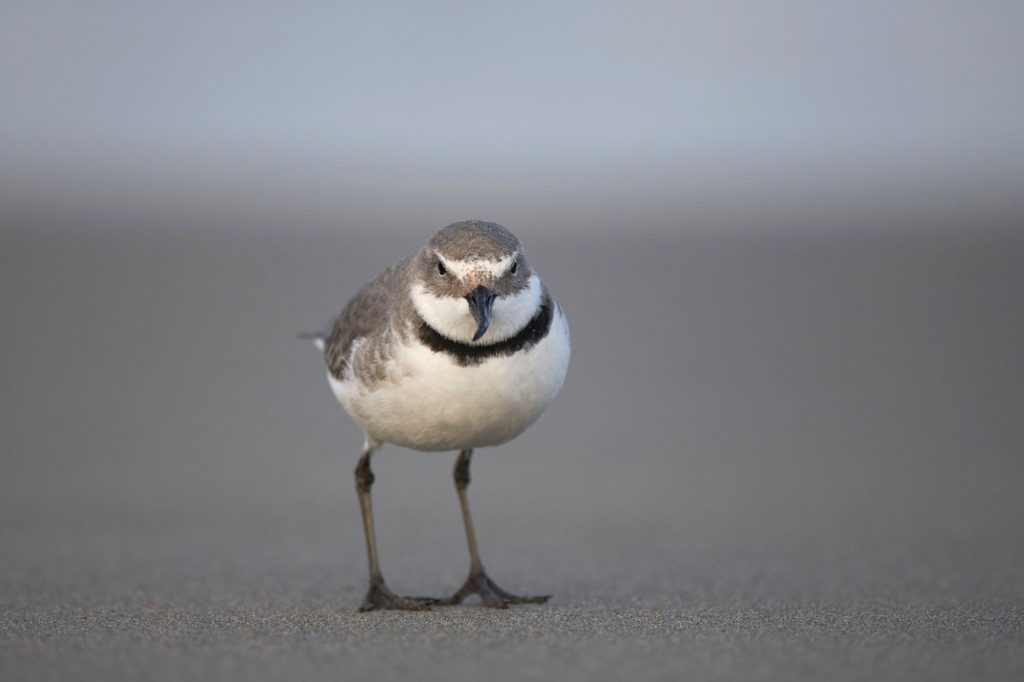
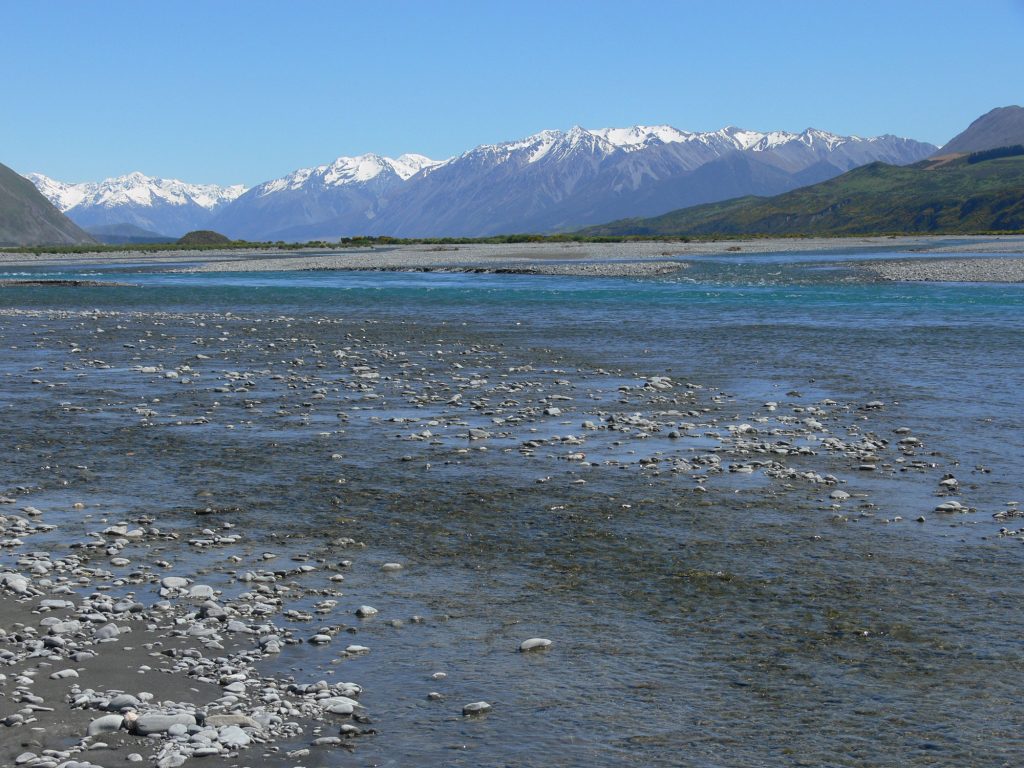
First, it is that singular bill. In the avian kingdom there occurs a dazzling diversity of bills – shape, size, length, colour, structure. For example, there are the improbable spoonbills, the bizarre toucans or the Far Eastern Curlew where the bill seems to go on forever. But only Ngutu Pare Wrybills have that bill curved sideways. Utterly unique and found only in Aotearoa New Zealand.
As the Age of Discovery unfolded and ships from Europe spread over the globe, specimens of exotic flora and fauna flowed back into museums and private collections. Some plants, birds, animals and insects bore similarities with specimens already familiar to natural scientists. Others though, were downright weird, and among the strange new birds being exposed to Old World scrutiny an inordinate number seem to come from New Zealand. The kiwi for instance, at first thought to be a mischievous collector’s composite, or the giant moa – too big to be a bird surely? Then there was the Ngutu Pare Wrybill.
Ngutu Pare Wrybill caused raised eyebrows among scientists. The first specimen was collected from the Waitemata Harbour in February 1827 by naturalists on the French ship Astrolabe. They couldn’t help but notice the peculiar sideways turned bill, but was it just an aberration? Unfortunately for other birds nearby, several more were shot to confirm that it was not: all birds had their beak bent to the right.
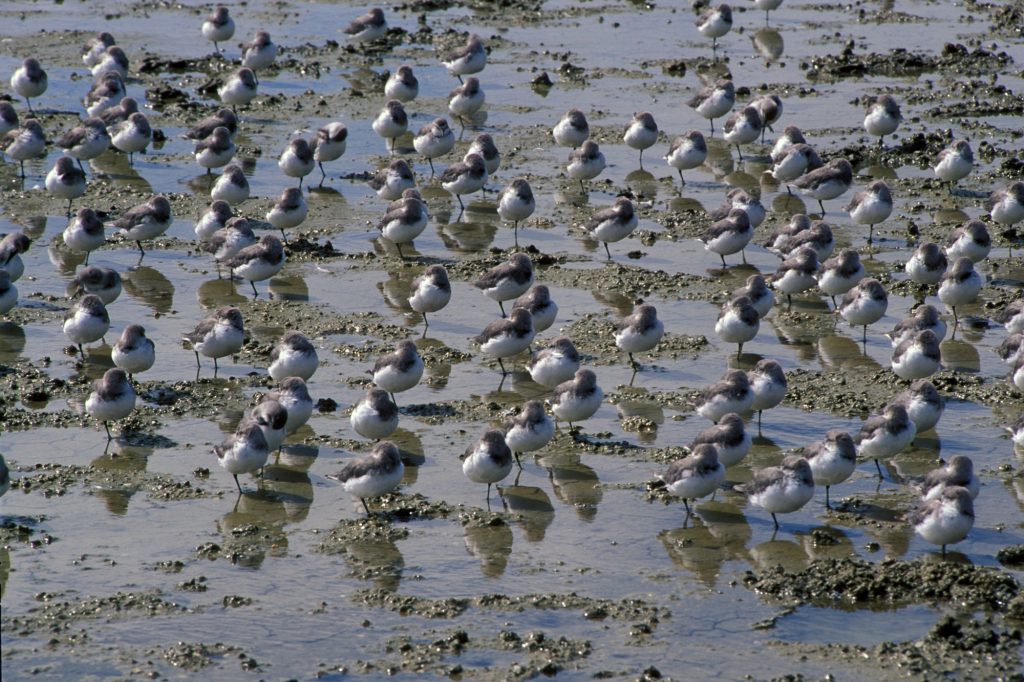
Tactical on tidal flats.
Like a Swiss army knife, their bill is a multi-purpose instrument. Birds probe beneath submerged river stones for caddis fly or may fly larvae. Good food out of reach of more conventional bills.
After breeding, Ngutu Pare Wrybills migrate north, most of the population heading for the Manukau Harbour and Firth of Thames. There on the soft tidal flats another feature of the bill emerges. On the vertical axis inside the curve, the upper and lower mandibles slope inwards. With its head held to the side, the bird now has a bill resembling a shallow spoon. From a great distance, the distinctive flick of its head identifies a foraging Ngutu Pare Wrybill, as it sifts through the biofilm layer on the mud surface, seeking micro-organisms such as diatoms. Yet the bill can also extract a worm from the mud, like any other bird on the flats
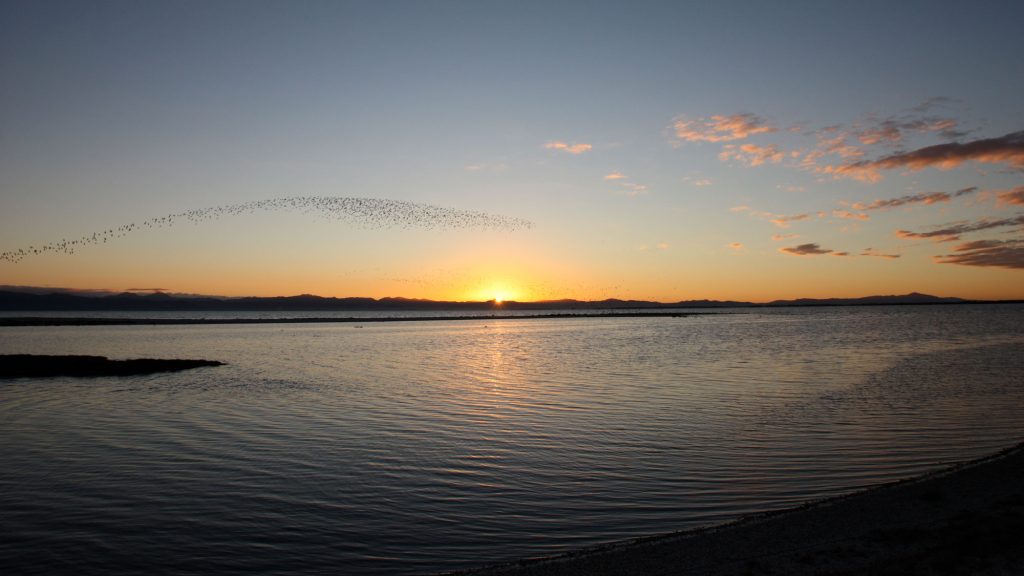
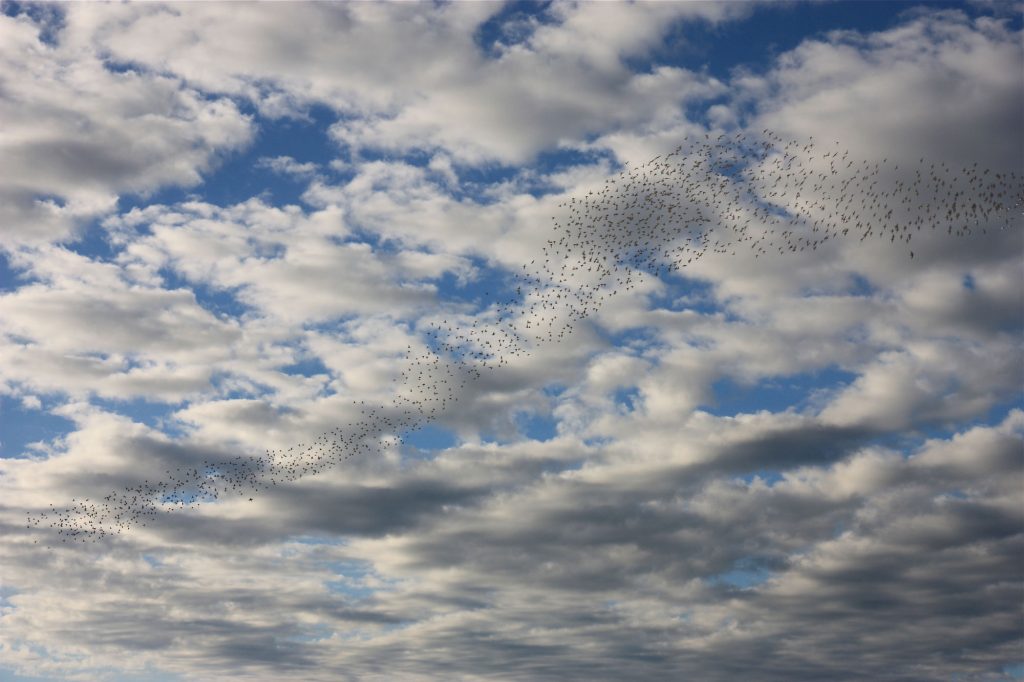
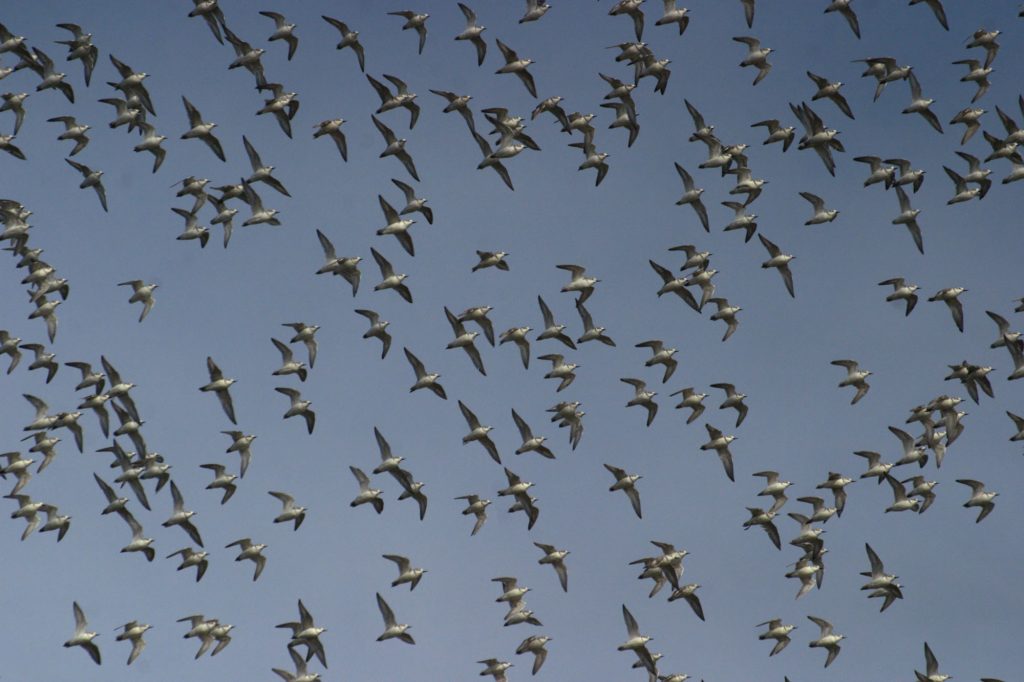
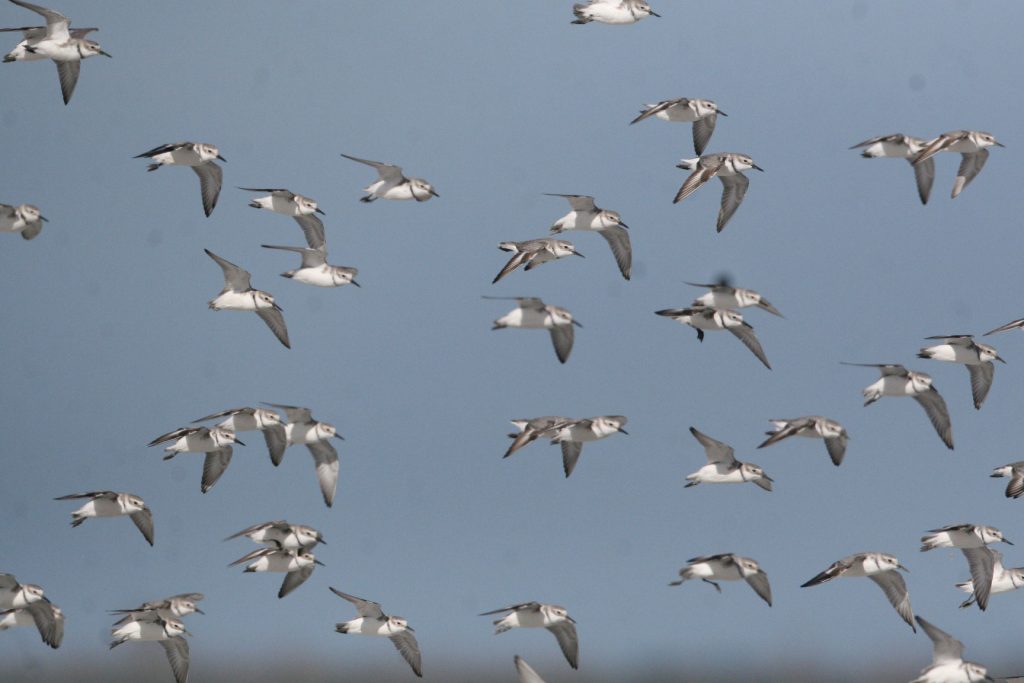
Come to Pūkorokoro for The Wryforce Airshow
Each year, from late December to August, Pūkorokoro hosts a flock of 2,000 Ngutu Pare Wrybill, which is nearly half the world population. If you visit at that time you may be treated to a breathtaking performance of aerobatics. The flock erupts off the roost to perform prolonged aerial ballets. Painted across the sky they twist, undulate, swoop and spiral. Frenetic twists and turns are followed by languid loops as the flock tease apart then coalesce, flashing white underparts twisting to dark as, turning away in unison, they reveal their grey upperparts. A string of birds peel off and spiral down like unravelled wool hung across the sky, before twisting and spooling upwards. A spectacle that is always enthralling.
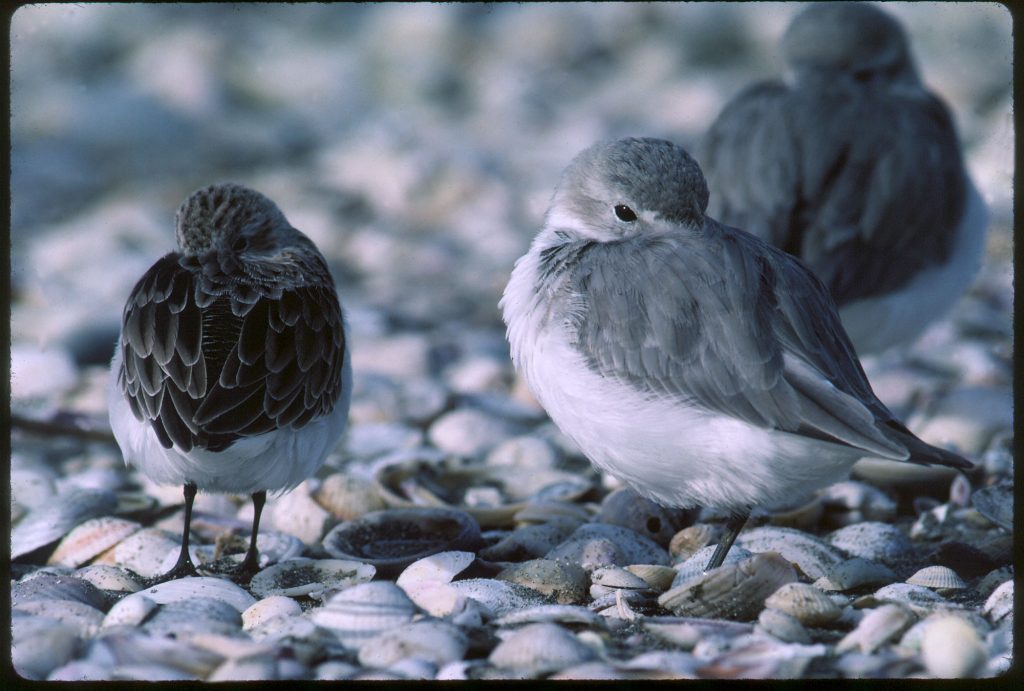
Cryptic on the rivers.
Ngutu Pare Wrybills breed in awesome landscapes, in the true meaning of that word. From September the Wryforce disperses over the broad braided reaches of the rivers such as the Waimakariri, Rakaia or Rakitata, or the Upper Waitaki system, those tumbling channels of water, milky green with glacial silt, against an alpine backdrop. Among swathes of river gravel and ground hugging plants, are nests impossible to see. Unless the incubating bird moves. The eggs and chicks are similarly cryptic, precisely adapted to that environment. Youngsters scarper and stumble over the stony flats, ready to freeze into invisibility if a parent alarms.

So an endearing and charismatic little bird, right?
Yet despite all this, Ngutu Pare Wrybills remain relatively unknown to many people in New Zealand. Which brings us back to those riverbeds where birds breed, and the severe stress those habitats are under. Reduced natural flows through land use practices that enable weed encroachment that in turn stabilises gravel bars and beaches, thus inhibiting the dynamic movement of channels and islands. The invasive vegetation also provides habitat and cover for predators. Disturbance from human activities such as vehicles on the riverbeds adds to the pressure. The ultimate outcome is modified riverbeds and degraded nesting habitat for Ngutu Pare Wrybill, and other species such as Tarapirohe Black-fronted Tern, Kaki Black Stilt, and Pohowera Banded Dotterel.
Much work is being done to address these major issues, and this needs to be supported. The resources need to be available for much more to be done, and sustained, if we want to secure a future for Ngutu Pare Wrybill. So, we need Ngutu Pare Wrybills to be firmly placed on the radar screen of Kiwis.
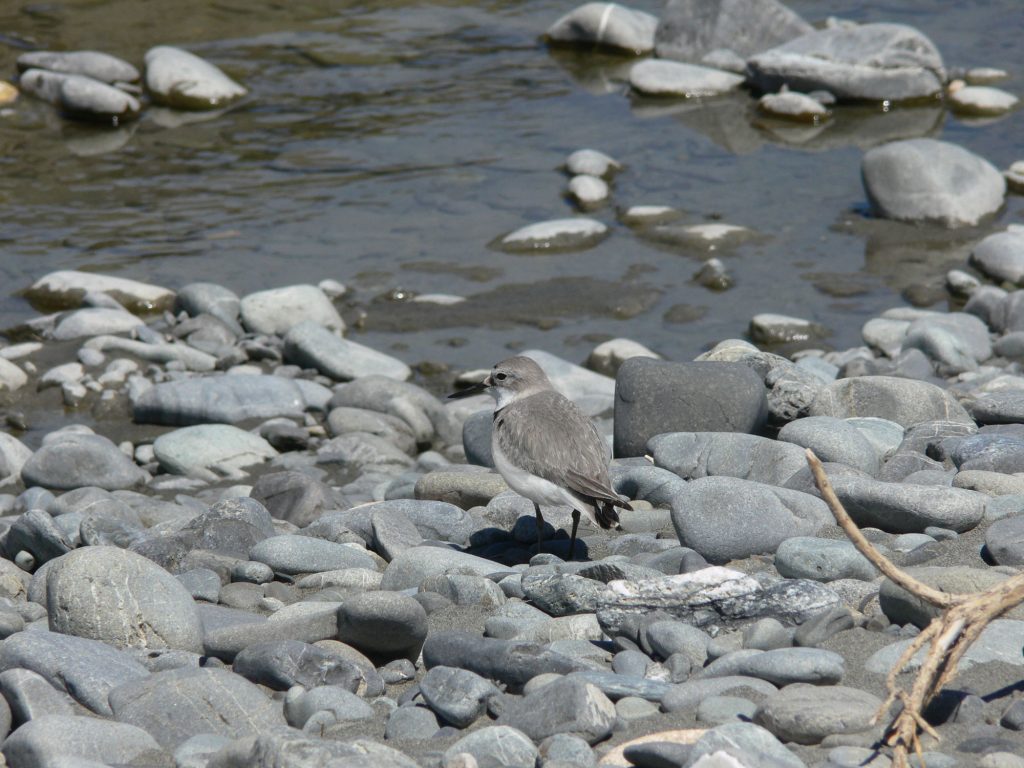
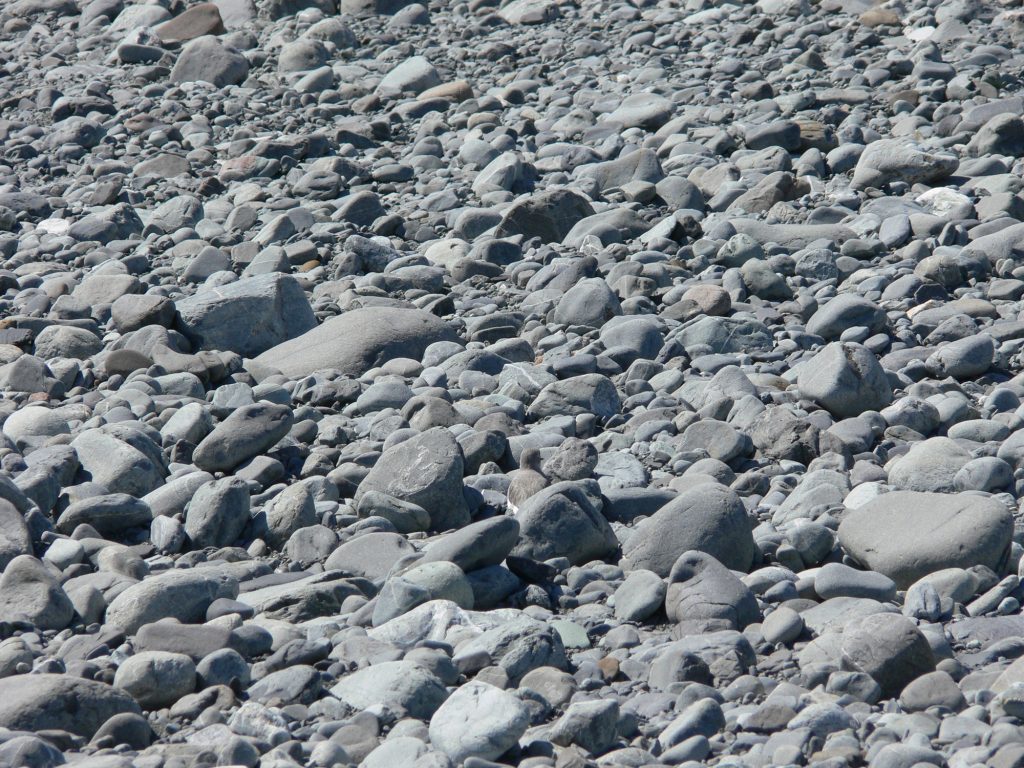
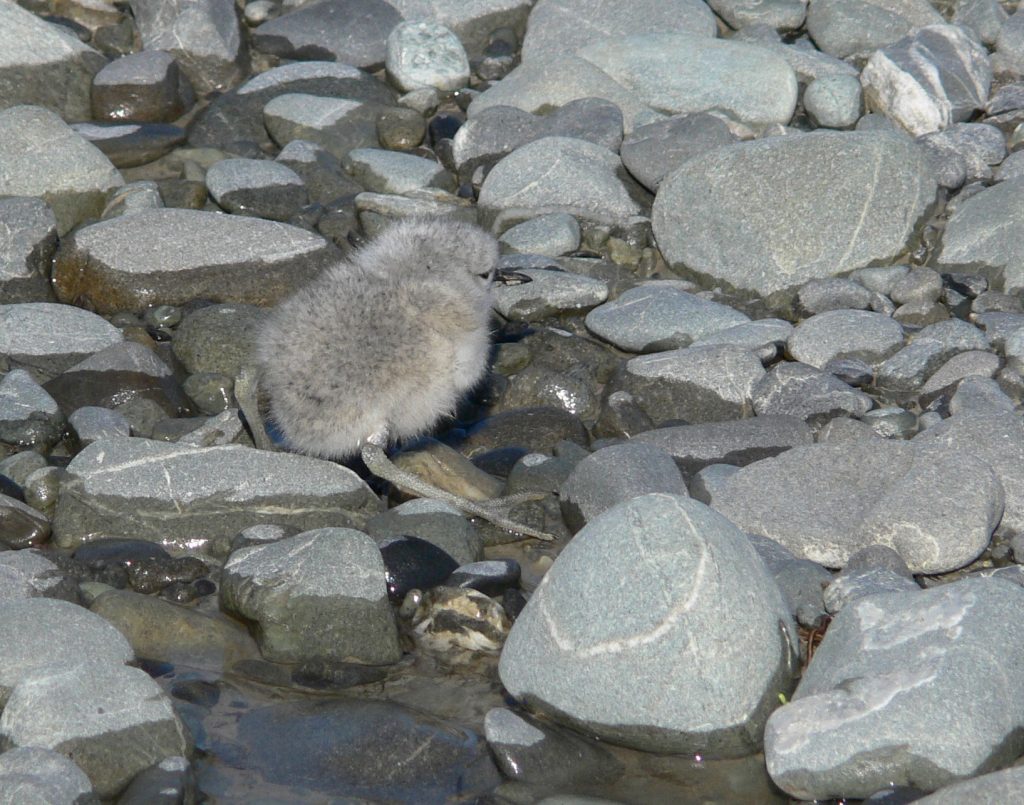
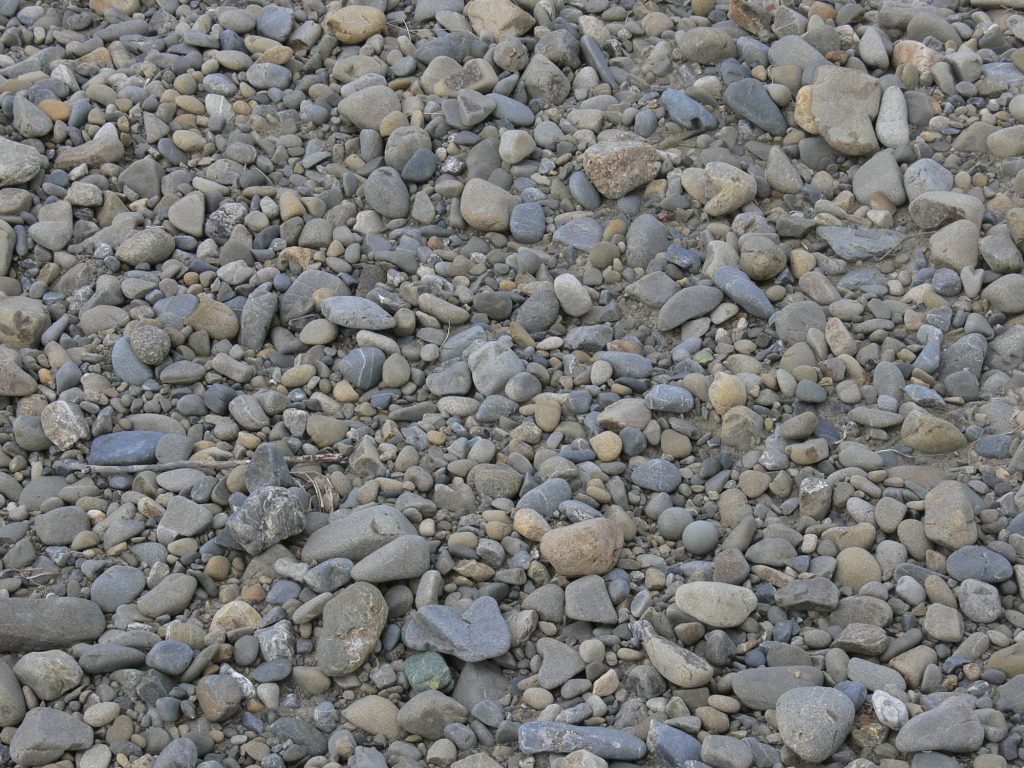
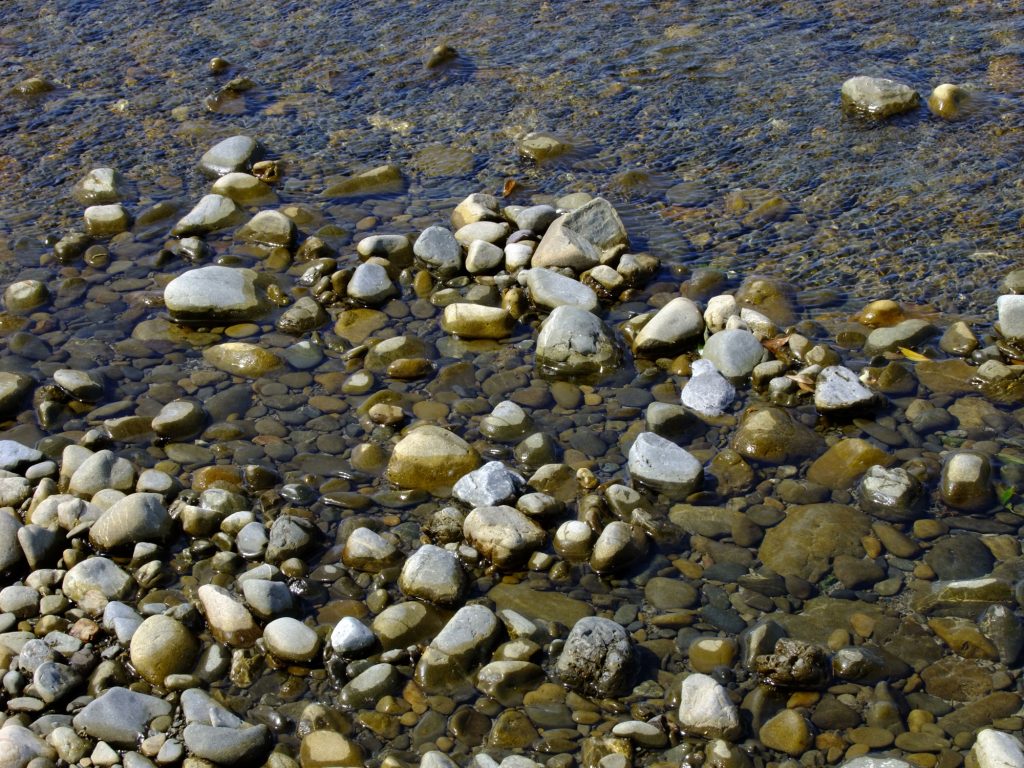
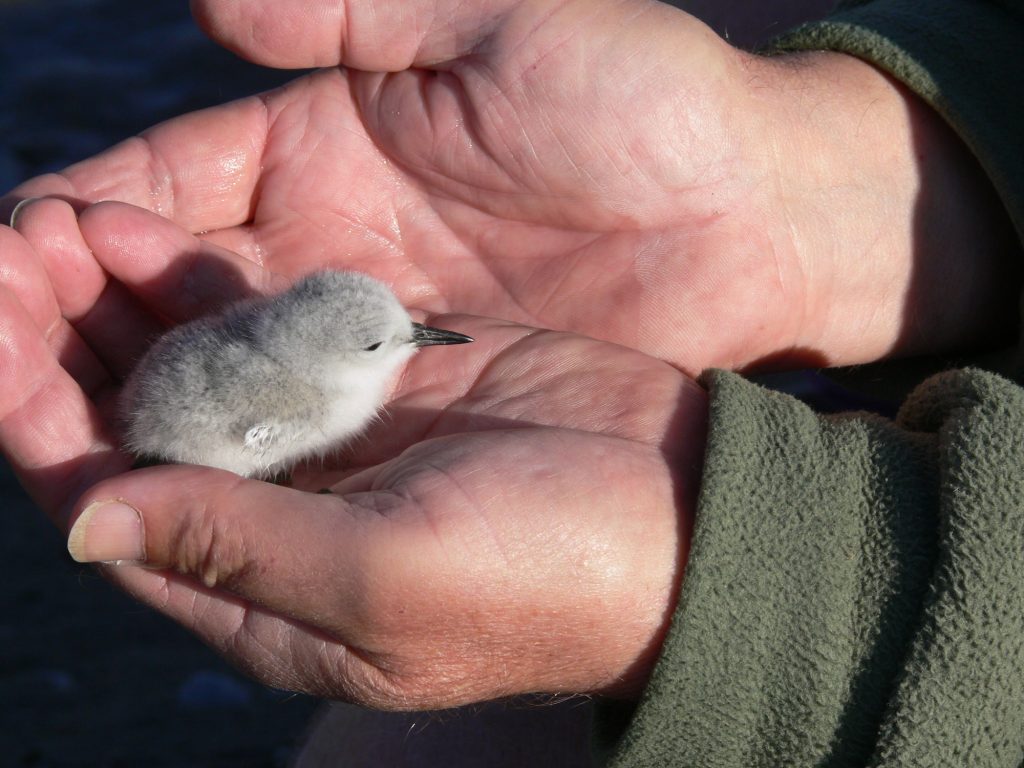
Like a Swiss army knife, it is a multi-purpose bill. Scraping around beneath submerged river stones for caddis fly or may fly larvae. Good food out of reach of other more conventional bills. On northern tidal flats the distinctive flick of its head identifies a foraging Ngutu Pare Wrybill from a great distance, as it sifts through the biofilm layer on the mud surface, seeking micro-organisms such as diatoms. Yet also using the bill to yank a worm from the mud, like any other bird on the flats.
Life with a Twist: Discovering the purposes of that strange bill

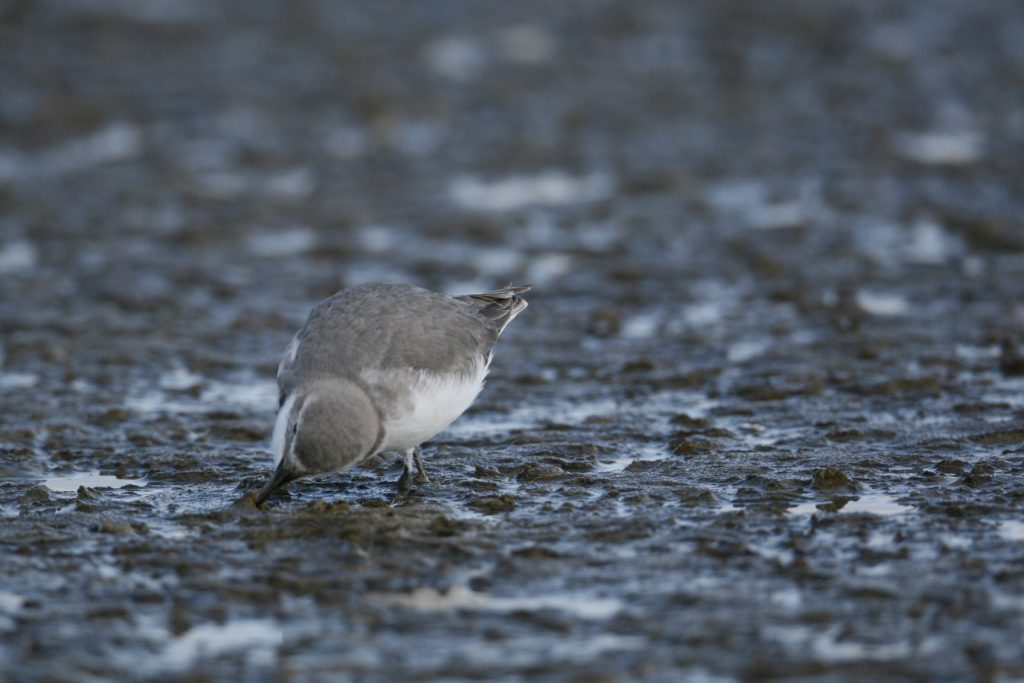
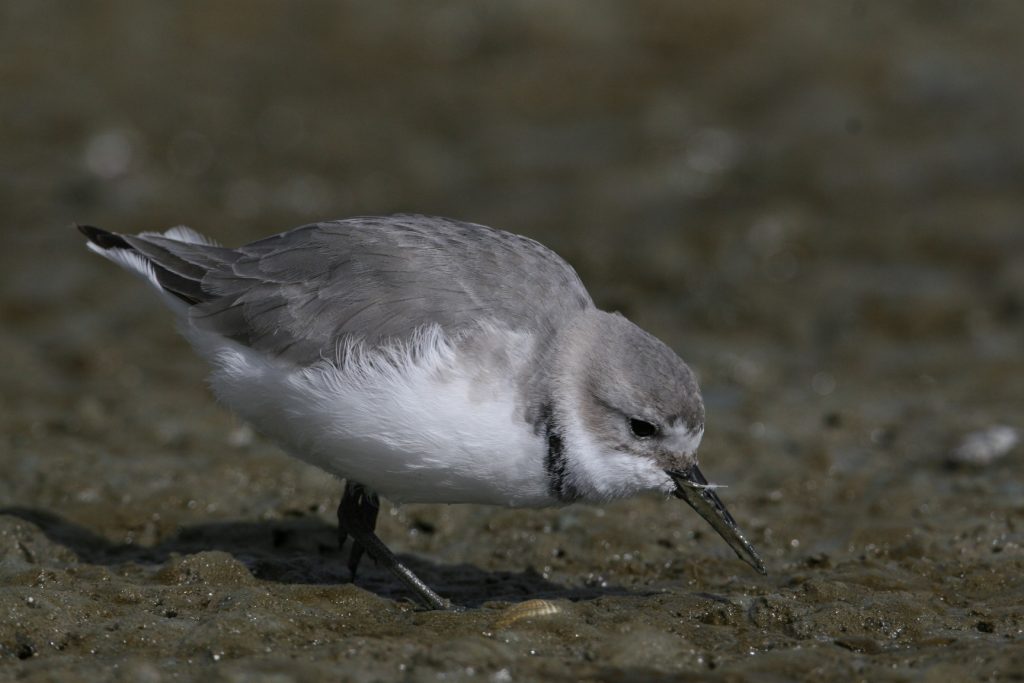
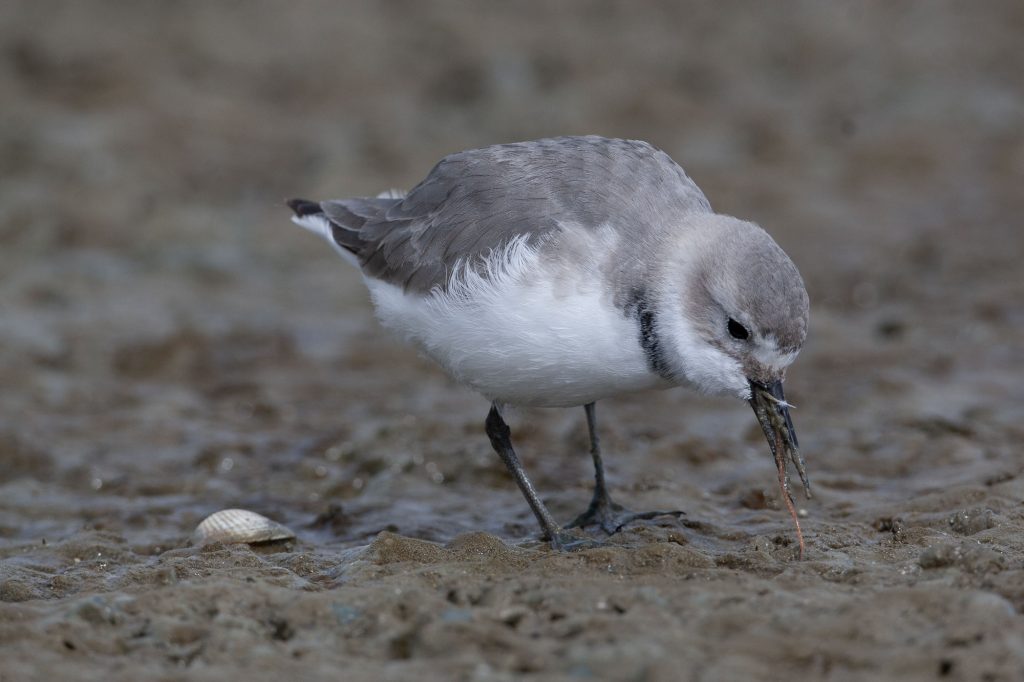
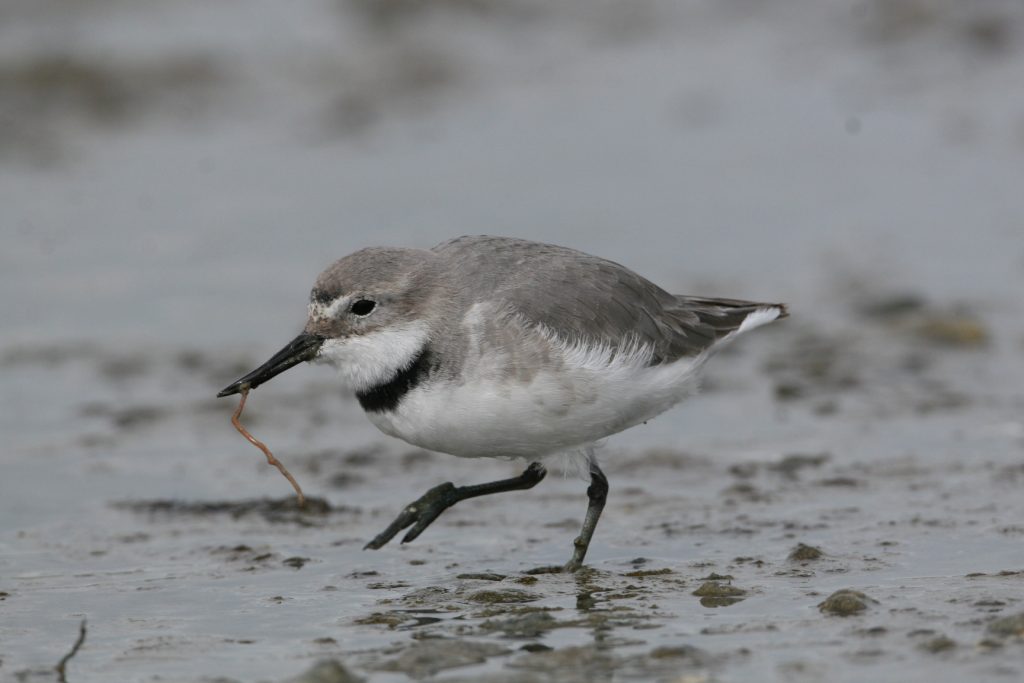
Yet despite all this, Ngutu Pare Wrybill remain relatively unknown to many people in this country. Which brings us back to those riverbeds where birds breed, and the severe stress those habitats are under. Reduced natural flows through land use practices, that enable weed encroachment that in turn stabilises gravel bars and beaches, thus inhibiting the dynamic movement of channels and islands. The invasive vegetation also provides habitat and cover for predators. Human activity such as vehicles on the riverbeds adds further pressure. The ultimate outcome is modified riverbeds and degraded nesting habitat for Ngutu Pare Wrybill, and other species such as Tarapirohe Black-fronted Tern, Kaki Black Stilt, and Pohowera Banded Dotterel.
Much work is being done to address these major issues, and this needs to be supported. The resources need to be available for much more to be done, and sustained, if we want to secure a future for Ngutu Pare Wrybill. So, a year of national publicity for these endearing creatures is what we are after. And for Ngutu Pare Wrybill to be firmly placed on the radar screen of Kiwis.
So join the campaign!
Ngutu Pare Wrybill for Bird of the Year 2025!
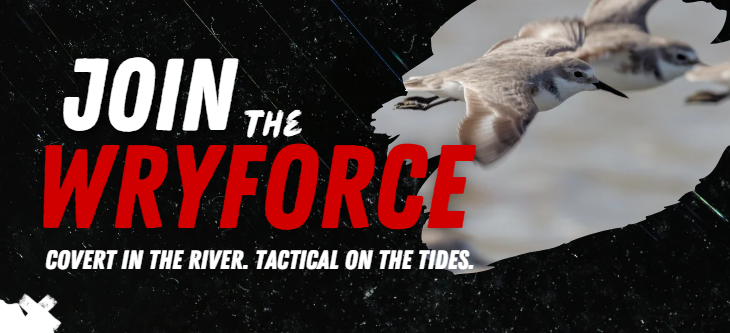
How you can help
- Vote for the Ngutu Pare Wrybill: (link live from Sept 15)
Voting opens: Monday, September 15
Voting closes: Sunday, September 28 - Tell a friend or neighbour – many people have never heard of this amazing little bird!
- Print or share a poster in your local café, shop, or library
- Sign up to our newsletter for updates and learn more about the Ngutu Pare Wrybill’s incredible journey.
- Support our work to protect nesting sites on braided rivers and feeding grounds at Pūkorokoro
